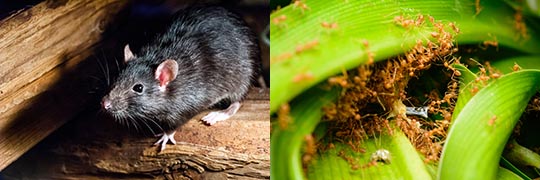BIO-SECURITY – REMOTE ISLANDS

Photos above from Shutterstock
What and Why: To find out more about the negative impacts of rodents (and mongooses) on the native species and ecosystems of the Hawaiian islands, please read DLNR’s informational page: https://dlnr.hawaii.gov/removerats/home/impacts-of-rodents-mongooses/
In addition to rodents, invasive ants are another pest that is important to prevent from being transported to Papahānaumokuākea and Pacific Remote Islands Marine National Monuments, which are home to numerous native seabird and plant species.
Target species include rodents (mice, rats), little fire ants and yellow crazy ants. Our rodent detection dog teams are certified through standards set by Working Dogs for Conservation.
Where: Applications include:
1) Screening vessels and cargo headed for the marine national monuments;
2) Monitoring of remote atolls post-eradication;
3) Surveillance for incursions within bird sanctuaries and other areas protected by predator-proof fencing.
Other Locations: CDH is also available to assist other Pacific islands with their bio-security K9 programs. In 2022, we assisted Guam Department of Agriculture in selecting and training working dog candidates for their bio-security program which targets invasive invertebrates.
